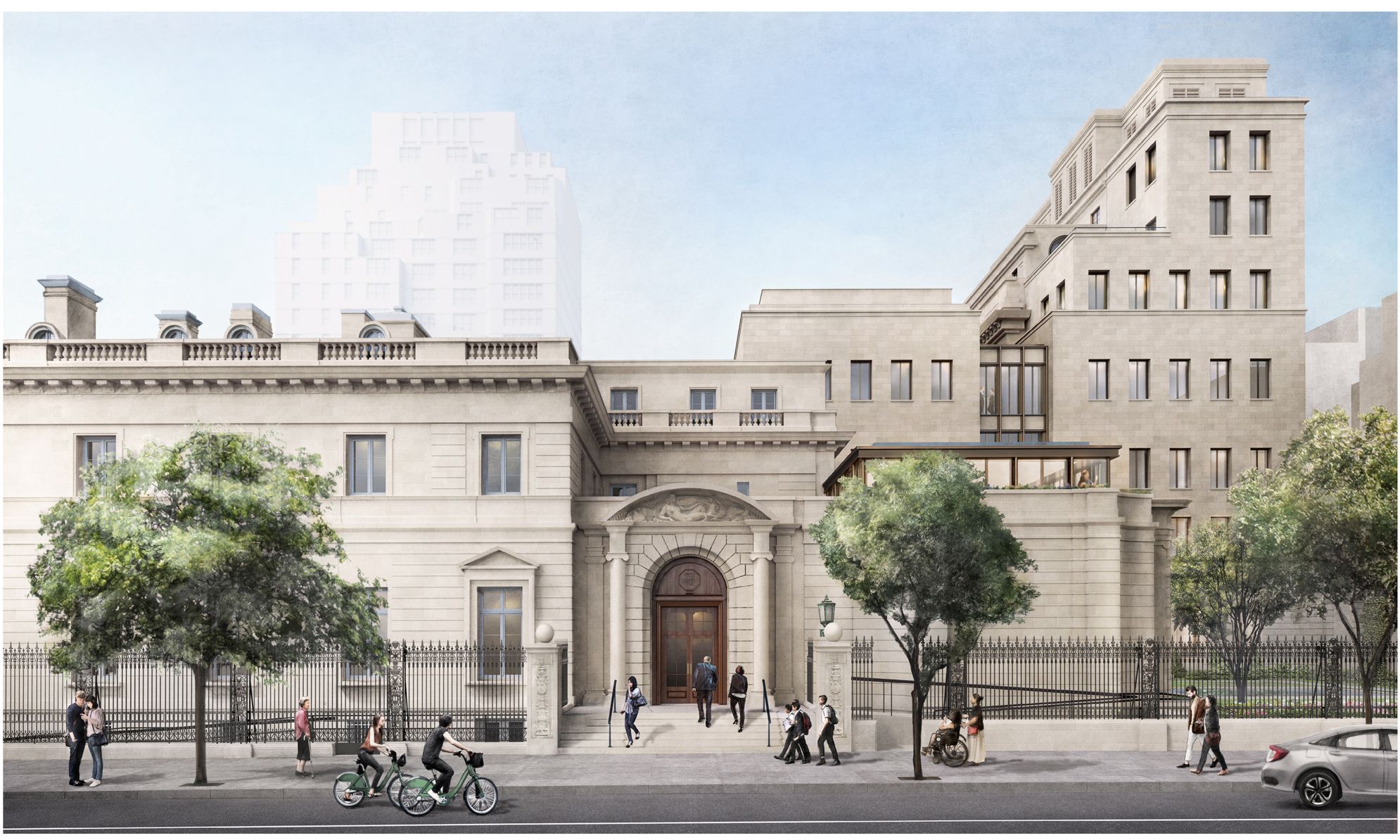Rendering of the Frick Collection from 70th Street Courtesy Selldorf Architects
As the Frick Collection’s reopening in Henry Clay Frick's historic Fifth Avenue mansion nears, the Manhattan museum is officially entering the public phase of its capital campaign having already raised $242m. Monies raised thus far include a lead gift of $35m by trustee Stephen A. Schwarzman, who helped launch the fundraising effort in 2019. The Frick’s new state-of-the-art auditorium will be named after Schwarzman in recognition of this support.
The project marks the first comprehensive upgrade of the Frick’s facilities in almost 90 years. The restored museum and library, expected to open to the public in late 2024, will include new exhibition, education and conservation spaces, increased accessibility, public amenities and reinforced infrastructure.
“Most people, I hope, when they come into the building will say, 'What did the Frick do?'," says Ian Wardropper, the Frick’s director. “We're refurbishing all the galleries that people know and love”.
The museum’s unparalleled trove of fine and decorative arts once belonged to Frick, a prominent US steel industrialist and arts patron, who bequeathed his Fifth Avenue residence and its storied holdings to the public upon his death in 1919. (A separate institution bearing his name, at his property in Pittsburgh, also displays treasures from his collection.)
The second-floor landing of the Frick Collection, which leads to new galleries devoted to the display of small works from the museum's permanent collection Courtesy Selldorf Architects
The Frick capital campaign's $290m goal supports the institution’s renovation and helps fund its temporary relocation to the Frick Madison, the former home of the Whitney Museum, where it will continue to operate until 3 March 2024 (the building will then be taken over by auction house Sotheby's). Of the total fundraising goal, $160m will be dedicated to capital improvements and new construction, and $35m has been allocated to improve long-term sustainability and energy efficiency. As the institution's campaign shifts into its public phase, a full 83% of the hoped-for funds have already been raised, including $37m accrued through its endowment funds and contributions from a wide range of individuals, foundations and government agencies. The campaign will continue through the Frick’s reopening.
“I'm very gratified that we've been able to raise so much money”, says Wardropper. “So many people have believed in what we're doing.”
The architecture firm behind the Frick’s next chapter, Selldorf Architects, has sought to preserve the history of the Frick with an eye towards operational longevity. Upon reopening, visitors will be able to explore the second floor of the stately East 70th Street mansion, an exciting glimpse into the inner sanctum of the property, which has been converted into new gallery spaces showcasing small-scale works from the collection.
“The second floor was where the family private rooms were, the bedrooms and so forth, and they're smaller scale than the grand rooms downstairs that people know,” Wardropper says. "I think people will love being able to go and get a sense of how the whole house worked. We've preserved or brought back the decorations that were there. It gives us 15 more rooms upstairs to show the collection”.
Rendering of the Frick Collection's new auditorium Courtesy Selldorf Architects
Three new first-floor galleries, plus a 220-seat auditorium with cutting-edge acoustics and a striking curvilenear design, will bolster the Frick’s educational and events programming. The overhaul also features the Frick’s first dedicated education room for seminars and courses. “Between the new education space and a new auditorium, it's going to be a whole new era for our education department," says Wardropper.
The museum’s prized library is also getting a facelift, complete with new entrance ramps, elevators, restrooms and a café. “We have one of the great art reference libraries in the world, but in the past if you were in the museum and you wanted to go to the library, you had to walk around the block to enter on 71st Street. Now we'll have a direct entrance that goes from the museum to the library,” says Wardropper. “I'm hoping that it becomes much better known and more available, more used by the general public."
The adjacent 70th Street garden designed by renowned landscape architect Russell Page—whose fate was the subject of much debate in the planning stages of a prior renovation project, under a different architect, which was ultimately scrapped—is also being restored, alongside a sweeping re-tool of the museum’s art elevator, installation preparatory spaces and storage areas.

